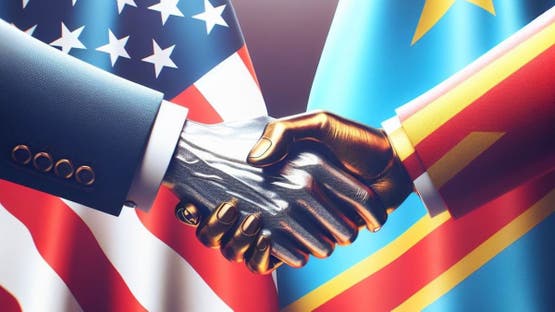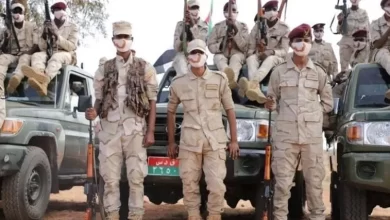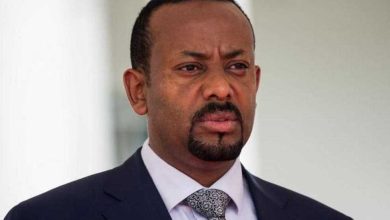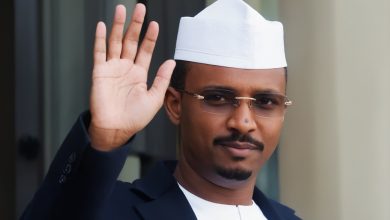The Minerals-for-Security Deal in Congo: The Legacy of Exploitation and Cycles of Dependency

By Dr. Amjad Farid Al-Tayeb
“True colonialism is the control over the minds of peoples; making them see the colonizer’s interests as their own, and trading their sovereignty for illusory promises of progress.”
— Ngũgĩ wa Thiong’o, Decolonising the Mind (1986)
In today’s global landscape, where new power maps redraw the lines of international competition, Africa emerges as a central arena of conflict—rich in natural resources yet politically fragile. Under glittering slogans such as “sustainable development” and “strategic partnerships,” investment deals are struck that raise profound questions: Are these genuine bridges toward independent economic revival, or merely sophisticated reproductions of colonial domination and exploitation in modern, softer forms?
The new strategic agreement between the United States and the Democratic Republic of Congo (DRC), centering on exchanging precious and strategic minerals for security support, stands as a stark example of this dilemma. Though not finalized by June 2025, its details reveal intense geostrategic dynamics and expose the persistent evolution of colonial dependency structures. It raises troubling questions about the future of sovereignty and national decision-making across Africa and the broader Global South.
Geography and Demographics
Located at Africa’s heart, the DRC covers over 2.34 million square kilometers, making it the continent’s second-largest country after Algeria. It belongs to the East African Community (EAC), despite extending west to the Atlantic coast, and is part of the Southern African Development Community (SADC) and the African Union. It borders nine countries, including Central African Republic and South Sudan to the north; Uganda, Rwanda, Burundi, and Tanzania to the east via Lake Tanganyika; Zambia and Angola to the south; and Republic of Congo (Brazzaville) and the Atlantic Ocean to the west via the Congo River mouth.
With a population around 115 million growing at nearly 3% annually, the country hosts more than 400 ethnic groups dominated by Bantu peoples (about 80%).
A Natural Treasure Trove Amid Poverty
The DRC is a natural treasure chest—holding over 60% of global cobalt reserves alongside copper, lithium, gold, coltan, and diamonds, as well as the Congo Basin, the world’s second-largest rainforest. Yet, despite a GDP of $150.8 billion, over 75% of its people live below the poverty line, a consequence of corruption and chronic political instability.
The Bloody Legacy of King Leopold: Foundations of a Distorted State
Understanding the Congo’s current tragedy requires tracing its most brutal roots—not merely traditional colonialism but a unique human plunder. At the end of the 19th century, Congo was not a Belgian colony institutionally but the private property of King Leopold II of Belgium. At the 1885 Berlin Conference, Leopold politically outmaneuvered European powers to claim the vast Congo Basin as the “Free State of Congo,” promising to combat slavery and pursue humanitarian goals.
The reality was horrific: Leopold turned the territory into a massive forced labor camp, employing the Force Publique mercenary army to coerce locals into rubber and ivory extraction. The regime used terror, including systematic hand and foot amputations, to enforce near-impossible rubber quotas. These atrocities, coupled with famines and disease from social collapse, caused a demographic catastrophe—historical estimates suggest Congo’s population halved, with 10 to 15 million dead by 1908.
Eventually, international pressure led by whistleblowers like British shipping clerk E.D. Morel and diplomat Roger Casement exposed these crimes, forcing Leopold to relinquish control to the Belgian state, transforming Congo into a formal colony. Yet this change merely halted the worst abuses; economic plunder and systemic racial segregation intensified. Belgium deepened ethnic divisions via “divide and rule,” favoring some groups over others in administration and military, sowing seeds for future violent conflict.
Education was tightly controlled by Catholic missions and limited to a small elite, the évolués. By independence in 1960, only about twenty Congolese held university degrees.
The Assassination of Lumumba: The Death of a True Independence Dream
On June 30, 1960, Congo gained independence burdened by this heavy legacy. Patrice Lumumba emerged as the first Prime Minister—charismatic, visionary, and a symbol of African liberation. He aspired to real sovereignty—not merely a new flag but control over resources for the people’s benefit.
This radical vision clashed with Belgian and Western interests intent on preserving economic dominance, particularly in the mineral-rich Katanga province. Shortly after independence, Katanga seceded with Belgian corporate and Western intelligence backing. Lumumba faced an international conspiracy to undermine the state.
Deemed a threat by the West after seeking Soviet technical assistance amid the Cold War, Lumumba was deposed and arrested, handed over to his enemies in Katanga, tortured, executed, and his body dissolved in acid to erase evidence.
This assassination—conspired by Belgian and American intelligence—was a deliberate killing of Congo’s sovereignty dream, plunging the country into decades of civil wars and coups. Mobutu Sese Seko seized power in 1965, renaming the country Zaire and ruling with Western support against communism until his 1997 overthrow by Laurent-Désiré Kabila. Subsequent civil wars involved nine countries, earning the label “Africa’s World War” (1998–2003), fueled by complex political and economic interests.
The M23 Rebellion: A Renewed Act in the Conflict Theater
The March 23 Movement (M23) embodies the continuing spiral of violence and external meddling. Rooted partly in the 1994 Rwandan genocide aftermath, Hutu militias fleeing to eastern Congo upset fragile ethnic balances, triggering regional military interventions. M23, arising in 2012 from a breakaway Tutsi militia backed by Rwanda, briefly captured the strategic city of Goma before being defeated by Congolese and UN forces. It reemerged stronger in 2021–2022, reportedly receiving direct Rwandan military and logistical support, regaining territory and destabilizing the region.
President Felix Tshisekedi publicly proposed a deal granting the U.S. access to Congo’s vast mineral resources (cobalt, copper, lithium, coltan) in exchange for military and security support against M23. Talks began early 2025, with hopes of agreement by June.
The China-U.S. Rivalry: Minerals for Security in the 21st Century
Facing crushing insecurity, Kinshasa’s weak hand opened the door for a new international bargain. The Congo-U.S. deal must be seen amid fierce geopolitical rivalry with China. For decades, China secured its African foothold via “minerals-for-infrastructure” deals, financing massive projects in return for long-term mining rights, now controlling around 80% of Congo’s mining sector.
China’s grip on critical minerals vital for clean energy and tech revolutions—Congo alone produces over 70% of the world’s cobalt—raises strategic alarms in Washington. In response, the U.S. launched the Minerals Security Partnership (MSP), a Western alliance to secure critical mineral supply chains and reduce dependence on China.
The U.S. offer is clear: advanced military aid, training, equipment, and possibly advisers to confront M23, in exchange for preferential or exclusive mining access currently dominated by Chinese firms. It’s an explicit trade: Congo’s urgent security needs for U.S. mineral access critical to counterbalance Beijing.
Reproducing Dependency: Economic Theories at Play
This deal exemplifies Egyptian economist Samir Amin’s theory of “global accumulation,” where the capitalist world system structurally divides into a dominant “center” (developed countries) and dependent “peripheries” (Global South), with the center’s development hinging on exploiting the periphery.
Amin’s concept of “unequal exchange” highlights how raw material prices tend to decline relative to manufactured goods, and how peripheral economies are structurally confined to raw material export roles, preventing industrialization. Congo’s minerals-for-security deal cements its role as a raw material supplier, while value-added refining and manufacturing remain in developed countries.
Similarly, the Prebisch-Singer hypothesis describes worsening trade terms for primary producers, resulting in a widening development gap. Foreign companies secure long-term resource extraction rights for limited returns to locals, perpetuating historical value loss. The deal institutionalizes structural dependency: producers remain raw suppliers, industrial powers capture added value.
Rather than using mineral wealth to build a diversified economy, Congo trades it for short-term imported security solutions—deepening dependency.
This creates a vicious cycle: instability (fueled by historical external interventions) creates security needs; these needs are exploited to extract resource concessions; concessions hinder development; poverty and fragility grow, fueling further instability, perpetuating dependency under new guises of “partnership.”
Breaking the Cycle: South-South Cooperation as a Path Forward
Is there a way out?
The answer cannot come from within the very system that produces dependency.
True resistance lies in building alternative models, foremost among them strengthening South-South cooperation. Instead of competing over deals with external powers, resource-rich African states could unite to change the rules.
Forming strategic blocs of mineral producers—akin to OPEC in oil—could grant them bargaining power to enforce fair prices and terms. Beyond export coordination, efforts should focus on building regional and continental value chains: joint refining plants, then gradually advancing to manufacturing battery components.
Partnerships with other Global South countries possessing technology and capital—such as Gulf states, Brazil, or India—under new terms guaranteeing technology transfer and local capacity building could be game-changing.
This path demands iron political will to resist immense pressure from great powers and multinationals, and to combat endemic corruption that serves as the internal gateway for external exploitation—but it remains the only viable route for breaking free from the “peripheral” trap.
From Leopold’s reign of terror to the modern minerals-for-security deal, Congo’s tragedy is a loud call: Africa and the Global South’s future cannot be built on economic agreements founded on unequal partnerships. Only by asserting true economic independence and sovereignty over resources can they transform their resource curse into a blessing for development and renaissance.



